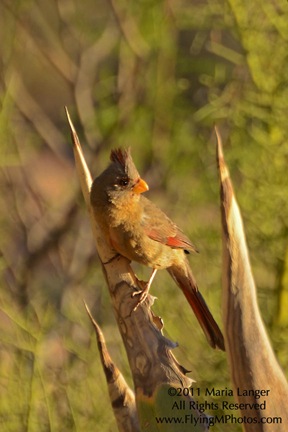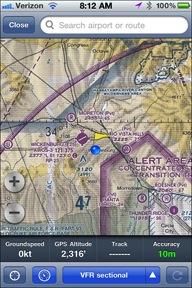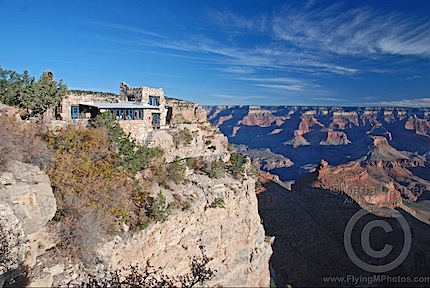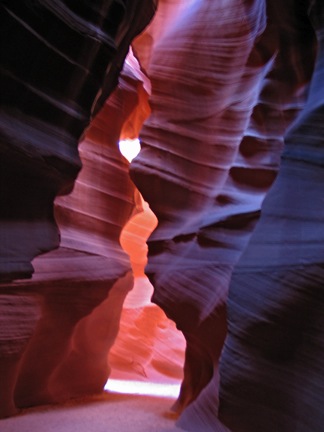Here’s a quick slide show of some of my best photos from the past four summers in Central Washington State. (Sorry, but it requires Flash. Ugh.)
Tag Archives: photography
Pelicans
Absolutely prehistoric looking.
Back early in May, I finished up a week in Ventura, CA, where was I updating my Twitter course for Lynda.com. Although Twitter’s feature set didn’t change much since I recorded the second version of course in April 2010, the interface has. The course really needed an update to bring it back into sync with the way the service looks. It should be published shortly. If you have any interest in Twitter, I hope you’ll check it out.
A Backstory
 The folks at Lynda.com put authors up in an area hotel. The first few times I came out here, they put me in a Holiday Inn Express near Ventura Harbor. I really liked my room, which was on the first floor with big windows overlooking the marina. There was a lot of life there — people walking, birds flying, boats, dogs, joggers.
The folks at Lynda.com put authors up in an area hotel. The first few times I came out here, they put me in a Holiday Inn Express near Ventura Harbor. I really liked my room, which was on the first floor with big windows overlooking the marina. There was a lot of life there — people walking, birds flying, boats, dogs, joggers.
Then, a little over a year ago, they switched to a hotel in Oxnard. Admittedly, it was a nicer facility with better accommodations for us. The rooms were little L-shaped suites roughly the same size as the Holiday Inn’s, but more modern and upscale. And the Internet service was about 5000% better. (Okay, so maybe I exaggerate, but it was better.)
Trouble is, it also lacked everything I liked about the Ventura Harbor place. The place was condo-like, with square 2-story buildings, each having eight units. The windows were small. There were balconies, but no reason to sit on them — and no furniture to sit on. The place was heavily wooded and it seemed dark and dank, like an unpleasant rainforest that was constantly shedding leaves and branches all over the property.
So on this last trip, I asked to stay at the Holiday Inn again. And the nice folks at Lynda.com booked my room there.
The Pelicans
 Which brings me to the pelicans.
Which brings me to the pelicans.
It’s odd that I don’t remember them, but they must have been here all along. They fly over the marina every evening, scouting the water between the boats for fish foolish enough to swim close to the surface. When the see their prey, they tuck their wings and dive, landing in the water with a great splash. They bob to the surface, often busy swallowing a fish.
Pelicans are absolutely prehistoric looking. I mean seriously — what other bird looks more like a pterodactyl?
I spent one afternoon after work walking around the marina, settling down in a spot where I could wait to photograph them. Unfortunately, I didn’t bring the appropriate equipment. All I had with me was my 16-85mm lens, which is a great multi-purpose lens but a pretty crappy lens for photographing wildlife. My 70-300mm lens was home. So was my monopod and my tripods.
 In other words, I wasn’t properly equipped.
In other words, I wasn’t properly equipped.
Still, I made the best of it. What you see here are among my best shots, taken late in the afternoon as the sun was sinking low on the horizon. One thing I learned that afternoon is that pelicans don’t like to dive when someone is standing nearby with a camera. Ah, if only I had my long lens and monopod! Next trip. (If you’re a Lynda.com subscriber, please do give my courses lots of positive feedback so I can some back and record more; next time, I’ll bring that lens.)
The shots here are the best I took that afternoon. Please pardon the ugly watermark, but I’m really sick of seeing my work on other people’s websites without attribution.
Enjoy.
The Arizona Cardinals
No, not those Arizona Cardinals.



I’ve been feeding the birds in my backyard whenever I’m home. I go through 10 or 20 pounds of bird seed a month. We have a pair of bird feeders and, more recently hung a quail block — that’s a big, 20-pound block of bird seed — from a mesquite tree. As a result, there are birds in the backyard during all daylight hours.
On Sunday evening, about a half hour before sunset, I went out onto the back patio armed with my Nikon D7000 and a 70-300mm lens mounted on my monopod. I sat down in one of the chairs and shortened the monopod leg as short as it would go. With the monopod’s foot resting on the chair between my legs, the camera was the perfect height for me to look through the lens comfortably. I sat and waited.
Of course, just coming outside scares the birds away. The feeder was only 20-30 feet from my chair. I had to wait until the birds forgot about me and would come back.
My goal was to capture images of the prettiest birds. But rather than shoot photos of them on the feeder or on the ground nearby, I wanted images of them in natural surroundings. There’s a frost-damaged agave in the back corner of the yard that some birds perch on while checking out the area. There’s also the mesquite tree, which is flowering (and making my allergies nearly intolerable) right above all the action.
It took nearly 10 minutes for the birds to begin gathering. When they did, I was ready. With the camera zoomed in to 300mm and the monopod to steady the shot without restricting my ability to frame it quickly, I was able to shoot quite a few images. Here are the best of the bunch.
 The photos on this page are of birds in the cardinal family. The first two are Northern Cardinals; female and male. The third is a Pyrrhuloxia (which sounds rather like a disease). At first, I thought it was a juvenile female cardinal, but the excellent National Audubon Society Nature Guide, Deserts set me straight.
The photos on this page are of birds in the cardinal family. The first two are Northern Cardinals; female and male. The third is a Pyrrhuloxia (which sounds rather like a disease). At first, I thought it was a juvenile female cardinal, but the excellent National Audubon Society Nature Guide, Deserts set me straight.
All of these images have a golden or even yellowish cast. That’s because of the low-lying sun. I didn’t do much editing here. I also have RAW versions of these images and hope to work more with them this summer when I have time to learn how to edit RAW. If I wind up with more satisfactory images, I’ll likely upload them to my photo gallery.
One of my Twitter friends, Miraz, mentioned that where she lives (in New Zealand) most of the local birds are more “drab.” I can assure you that we have plenty of “drab” birds here. I just happened to focus (pun intended) on the more vibrantly colored ones.
Is iPhone/iPad Killing Stand-alone GPS?
I think so.
This morning, while going through the tweets in my Twitter stream that had arrived overnight, I stumbled upon a MacObserver article that discussed the iPhone becoming the top “camera” on Flickr. (I have my own opinions on that factoid, which I left as a comment on that post; it’s not a favorable commentary on Flickr users.) That post linked to a far more interesting one by Ted Landau titled “A Dozen Devices the iPhone is Killing.” In it, Ted discusses how features in the iPhone that duplicate those in stand-alone devices are making those devices redundant or simply not necessary.
GPS for Everyday Use
As I commented on that post, Ted is right on target with the GPS analysis. I’ve been using various GPS tracking apps on my iPhone for a while now and am super-impressed with the results. The first one I tried was the $2 GPSTrack app, which I wrote about here. Since then, I’ve also played with GPSLite, a free app that does much the same and more for free (which an interface I find a bit too complex for everyday use). My goals with apps like these is to create track logs and trip computer data for flights and for geotagging photos.
Although I’m not fond of turn-by-turn navigation, I know there are plenty of apps that do this, too. So, as Ted pointed out, in-car GPS navigation systems can also be replaced by an iPhone.
GPS for Flying

ForeFlight runs on my iPhone and includes not only GPS capabilities, but flight planning, weather, airport information, and more.
For pilots, a great app called ForeFlight, which works on both iPhone and iPad, offers better functionality than the $12,000 panel-mount Garmin GPS in my helicopter. Rather than view my location on a primitive screen display, I can see it on an actual aeronautical chart. I can also download charts and other information in advance so there’s no need to rely on 3G connectivity in flight. If I do have 3G connectivity, I can also get up-to-date weather information in flight. And although the iPhone screen is generally too small for my aging eyes to see the details, the same software works on my iPad — that screen size puts my panel mount system to shame. In fact, ForeFlight is the reason I’m updating to a G3 iPad 2 — that model includes a GPS; my original WiFi iPad does not.
Garmin is apparently trying to play catch-up with this functionality but I don’t think they’ll succeed. Why would someone pay thousands of dollars for a one-trick pony like a panel mount GPS when less than $700 will get you an iPad with GPS and Internet capabilities that can be updated on the fly and do so much more — for example, e-mail, Web browsing, ebook reader, and other apps? Best of all, the FAA is starting to accept apps like Foreflight as “electronic flight bags,” thus making traditionally required documents such as printed charts and flight plans unnecessary. (This is something I hope to blog about in more detail soon.)
And Another Thing…

Here’s ForeFlight on my iPad. Although this iPad doesn’t have a GPS and can’t do accurate tracking, my iPad 2, which should arrive soon, will.
One thing Ted didn’t mention is the main reason why I don’t like carrying more devices than I have to: batteries and charging. When I go on the road, it seems that my “gadget kit” is filled with cables and charging devices. And spare batteries. What a pain in the butt! Wouldn’t it be nicer to carry just one cable and charger, perhaps with a DC adapter? While it’s true that running a GPS app on an iPhone, especially in tracking mode, sucks battery power more than almost anything else you’re likely to do with the phone, a DC charging device can usually remedy this. Heck, even my helicopter has a DC power port.
At this point, it’s hard to imagine why someone would buy a standalone GPS if they had an iPhone or another smartphone with equally good GPS capabilities. Can you think of a reason?
In Search of My Next Great Photo
Competing with someone I know I can beat: myself.

This photo raised the bar for my landscape photography; I consider it one of my best. (Click for a larger view.)
In 2010, right around this time of year, I took my Jeep and camera out into the desert east of Wickenburg for a bit of what I call photojeeping. Along the way, I made many stops and shot many images of the wildflowers that were in such abundance that day. On that day, I also shot what I still consider to be my best photo.
Let me take a moment to describe what I consider a great photo. Simply put, it needs to meet certain criteria:
- First Impression = Wow! You know how that goes. You look at a photo or piece of artwork or even something that’s not normally considered “art” and your first response is a mental or even audible “Wow!” What you’re seeing captures your attention and holds it. It makes you really look at it. Examples of wow photos can be found daily on The Big Picture and other news sites that feature extraordinary photography. What makes you say “wow” is likely to be different from what makes me say “wow,” but I’m pretty sure there’s some overlap. I’m pretty picky, though, so I’m not likely to say “wow” about a photo as quickly as some other folks. In fact, I’ve been in groups looking at photos that seemed to impress just about everyone but me. The point: it takes a lot to impress me.
- Composition. This is one of the things that separates real photographers from people who take snapshots. A real photographer — someone who is actually thinking about the photo before he pushes the shutter button — will study the scene before him and determine how to best frame the elements within it. Composing with the Rule of Thirds in mind seldom leads to a bad photo, but there’s so much more to consider than that. Does a composition have depth through the inclusion of foreground and background subjects? Are elements arranged in an aesthetically pleasing way? Too many people don’t realize that a photo’s composition can be dramatically altered by standing two feet to the right, moving ten feet closer to a subject, or shooting from a kneeling position instead of standing up. And then there’s the choice of lens and focal length — it’s so much more complex than just magnification. Is the composition of the subject matter as good as it could be?

While this isn’t a great photo of the Grand Canyon, it does illustrate two points that make it more interesting than the standard straight-on midday shot: composition and light. (Click for a larger view.)
Light. I can’t overstate how vitally important light is for good photography. Consider a subject like the Grand Canyon. Thousands of people visit every day and most of them are clicking away with their cameras. But how many of them are actually making good photos? I’ve been at the Grand Canyon countless times at all times of the day and night. (Have you ever seen the Grand Canyon by the light of a full moon in the winter time, with a blanket of fresh snow on the rim? Try it sometime.) I can assure you that there’s nothing less interesting than a full-frame shot of the canyon taken from the Rim outside Bright Angel Lodge at midday on a perfectly clear day. It looks completely unimpressive and downright flat. Yet that’s what so many people shoot. If you’re serious about photography and making a good picture, you’ll come back when the light is better — low in the sky or maybe filtered between clouds. You’ll let the deep shadows created by nature add depth to the image. You’ll let the golden color of the light add a warm glow to your scene and bring out the natural red color of the canyon walls.

This photo of Antelope Canyon is out of focus and there’s nothing I can do to make it any better. It is and will always be a crap photo.
Mechanics. I’m talking here about basics like focus and exposure. A photo could meet all the other criteria, but if its out of focus or improperly exposed, it fails as a good photo. Let’s face it: if you’re serious about photography, you need to master focus and exposure settings on your camera first, before you spend a lot of time, effort, and perhaps money trying to capture great images.
These are just four of many criteria that can be used to judge the quality of a photographic image. They’re the four top criteria I use when I judge mine.
I realized a while back that I’m in a never-ending photo competition, one where I’m always trying to beat myself. I make what I consider a good (or even great) photo and I then try to make one that’s better.
Sometimes it seems easy. For example, when I shot my Desert Still Life (shown at the top of this post), I was unhappy with the focus. It wasn’t terrible, but it wasn’t the best it could be. So I figured I’d just go back and try again. Although only two days had passed, the scene was dramatically different; I’d have to wait at least a year to try again. Timing, in this case, was everything. I got lucky for my good shot.
(Permit me to take a moment to critique this photo a bit more. Focus isn’t the only problem. The other problem is the sky: it’s too damn blue. This is a problem we have in Arizona — most days there simply aren’t any clouds in the sky. A few clouds — heck, even a contrail — would have made this photo a lot better. But there’s nothing I could do about that. Sure, if I waited for a partly cloudy day, I could have gotten a better desert scene. But would those cactus flower have been in such spectacular full bloom?)
So now I just try to beat that shot and others I also think are good with new and interesting subjects. It’s tough. Sometimes I’ll be at a place where I think I can pull it off and I wind up walking away with an SD card with a handful of disappointing images. But I don’t give up. And I keep experimenting — mostly to learn what works and what doesn’t.
And I think that’s the only way to improve at anything: to keep trying to be your best. To look at past achievements and work hard to take things to the next level. To learn from experience and experimentation.
Sure, along the way there will be plenty of frustrations. But will there ever be so many that I give up? I don’t think so.


